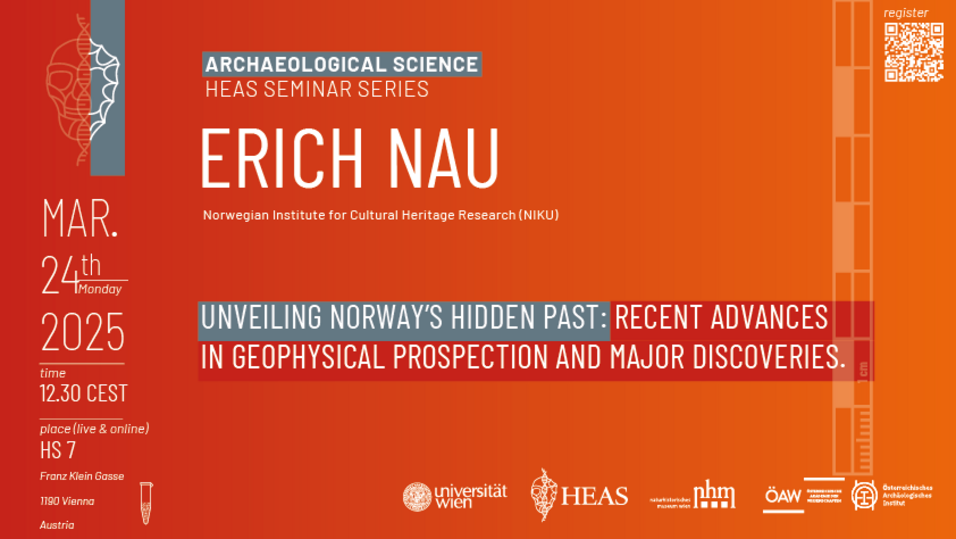24.03.2025 12:30 - 13:30
As part of the HEAS Seminar Series in Archaeological Science, Erich Nau from the Norwegian Institute for Cultural Heritage Research (NIKU) will give a talk on Unveiling Norway’s Hidden Past: Recent Advances in Geophysical Prospection and Major Discoveries on the 24th March 2025 at 12:30 CEST.

